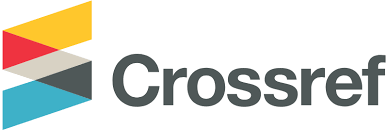Implementasi Algoritma Pemilihan Node Tetangga Terbaik Pada Protokol Routing DSR di Jaringan MANET
Implementation of the Best Neighboring Node Selection Algorithm on DSR Routing Protocol in MANET
Abstract
Mobile Ad Hoc Network (MANET) is a wireless telecommunications technology that consists of a collection of dynamic nodes. Due to these properties resulted in the mobility of nodes in MANET. So that every relationship between nodes will always change and cause the process of finding a vulnerable route to take a long time. Each node also has a role as a host or router in exchanging information. In MANET delivery assurance and the ability to deal with path changes on an ad hoc basis are critical. So that in sending data packets from the source node to the destination node, a Routing protocol is needed. The routing protocol Dynamic Source Routing (DSR) in the route search process broadcasts RREQ to all neighboring nodes (intermediate nodes) without knowing whether the node is the best node or not. So that the possibility of the route being interrupted because it is not composed of the best nodes can occur. A modification of the DSR routing protocol is proposed by finding the best intermediate node based on parameters, namely bandwidth, RTT, packet loss ratio. Then the neighboring nodes (intermediate nodes) that have been selected will arrange the delivery route from the source node to the destination node. The performance of the modified DSR and DSR routing protocols will then be measured using test parameters, namely throughput, packet delivery ratio (PDR) and average end to end delay. Based on the results of research trials, the application of the modified DSR method can improve the performance of the DSR protocol. Which after the application of the method, the average throughput increased by 25%, Packet Delivery Ratio (PDR) was 1.11% and the average end-to-end delay decreased by 17.64 %.

















